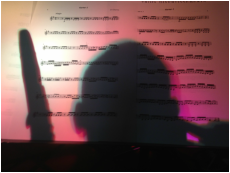
Have you ever been ready to take the stage for a big performance and one of your clarinet colleagues says something like “I play an asymmetrical facing, so...” You take your seat to play the Ring Cycle and promptly forget the conversation. Then, a couple of days later, your friend’s comment comes back to you and you think to yourself “what did she mean? I meant to ask, but forgot”. A simple phrase can make you think about your equipment. You’ve been playing for years without that knowledge, so does it matter? What do you need to know about mouthpieces? Unless you have decided to embark on refacing mouthpieces as a vocation, or an avocation, then a general knowledge of the mouthpiece facing will probably suffice to assist you in your mouthpiece knowledge.
There are two main schools of thought in the French style mouthpiece arena regarding facings. The first is asymmetrical facings and the second is symmetrical facings. I solidly land in the latter school, but I will explain asymmetrical facings so you have a general base of knowledge.
Using various tools, most importantly, a high quality piece of glass with varying grits of sandpaper, a mouthpiece refacer will put a facing on a mouthpiece, which is a curve that starts a measured distance above the table of the mouthpiece and culminates in the tip opening. For an asymmetrical facing, the opposing sides of the mouthpiece window will have different measurements, usually with all measurements on one side being longer than on the other.
With a properly balanced reed, this will create resistance in the mouthpiece, which some people like. There are fine clarinetists and mouthpiece makers that believe in this school of thought, and I do not wish to suggest that school of thought is wrong, just different from my thinking and experience.
One thought in asymmetrical facings is that by creating these measurements, one is compensating for unbalanced reeds. Many reeds on the market today are unbalanced, so this thought does have some merit, however, I believe that one should balance their reeds to their mouthpiece, not the opposite.
Good clarinetting, more to come…
 RSS Feed
RSS Feed